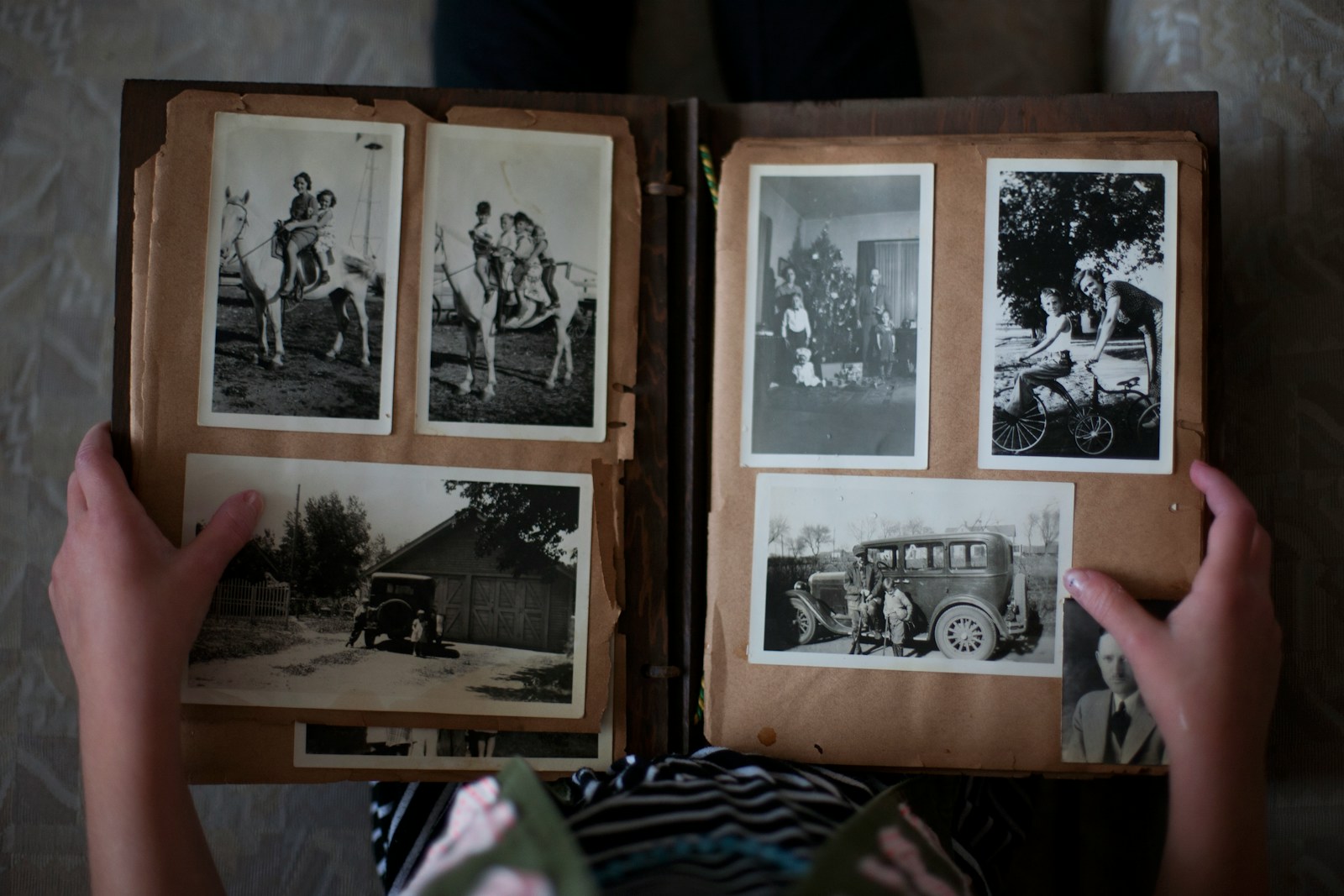Family photos hold immense sentimental value, capturing precious moments that tell the story of past generations and are great for legacy preservation. However, as time passes, these photographs are susceptible to deterioration due to fading, discoloration, mold, and physical damage. To preserve these cherished memories for future generations, it is essential to employ effective methods for storing and digitizing them. The best way to save old family photos involves a combination of proper physical storage, digital preservation, and cloud backup.
1. Proper Physical Storage
To prevent old photographs from deteriorating, proper physical storage is crucial. Photos should be kept in a cool, dry, and dark environment to minimize exposure to heat, humidity, and light, which can cause fading and damage. Using acid-free photo albums, archival-quality storage boxes, and protective plastic sleeves helps to prevent deterioration. It is also advisable to avoid storing photos in attics or basements, where extreme temperature and humidity fluctuations can accelerate damage.
Handling photos with clean hands or using cotton gloves prevents oils and dirt from causing long-term harm. Additionally, labeling photos with archival-safe pens can help future generations identify the people and events depicted without risking ink damage.
2. Digitizing Photographs
One of the most effective ways to save old family photos is by digitizing them. Scanning photos at a high resolution (at least 300-600 DPI) ensures that they are preserved with maximum detail. A flatbed scanner is ideal for scanning delicate or fragile images, while specialized photo-scanning services can assist in digitizing large collections efficiently.
For an even more detailed capture, using a digital camera with proper lighting can be an alternative. Once digitized, the files should be saved in multiple formats, such as JPEG for easy sharing and TIFF for long-term, high-quality preservation.
3. Organizing and Naming Digital Files
After digitization, organizing and naming files properly is essential. Sorting photos into folders based on family members, events, or time periods makes them easier to locate in the future. Including metadata—such as names, dates, and locations—in file properties or using photo management software (e.g., Google Photos, Adobe Lightroom) helps future generations understand the significance of each image.
4. Backing Up Digital Copies
Digital files are vulnerable to accidental deletion, hardware failures, and cyber threats. Therefore, maintaining multiple backups is crucial. The “3-2-1” backup strategy is recommended:
- Keep three copies of each file (the original and two backups).
- Store them on two different types of storage media (e.g., external hard drives and USB drives).
- Keep one backup in an offsite or cloud location.
Cloud storage services such as Google Drive, Dropbox, or iCloud offer reliable options for remote access and protection against data loss. Additionally, backing up photos on external hard drives or DVDs provides an extra layer of security.
5. Sharing and Preserving Family History
Preserving family photos is not just about safeguarding them from physical damage but also about ensuring they remain meaningful for future generations. Creating digital photo albums, slideshows, or family history websites allows families to share their memories easily. Some online platforms even allow users to create interactive family trees with photographs.
Furthermore, printing photo books with captions and stories helps maintain a tangible connection to the past. Oral storytelling and written documentation of family history can also add context to the images, ensuring that future generations understand their heritage.
Saving old family photos requires a combination of careful physical storage, digital preservation, and reliable backup methods. By storing photos in archival-quality materials, digitizing them with high resolution, organizing files systematically, and using cloud storage and external backups, families can ensure their treasured memories remain intact for generations to come. Ultimately, preserving these photographs is not just about protecting images but also about keeping family stories alive and passing down a rich legacy to the future.
